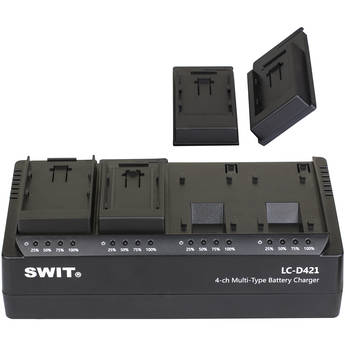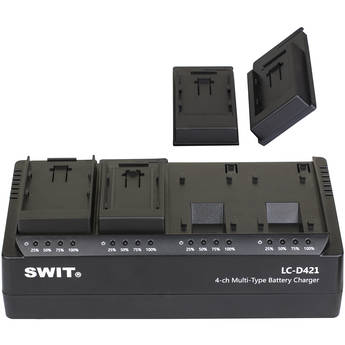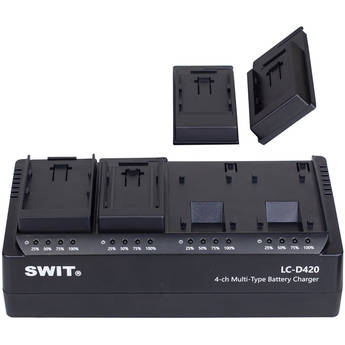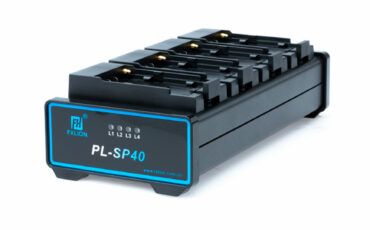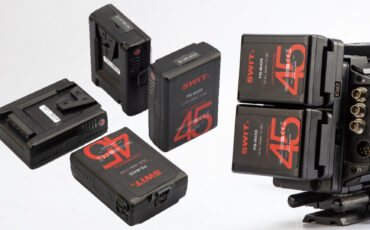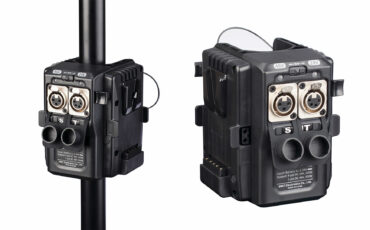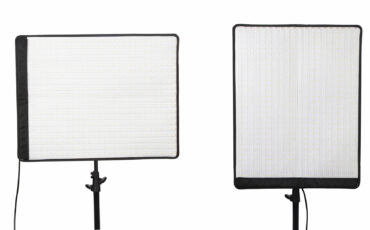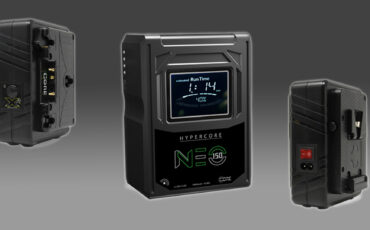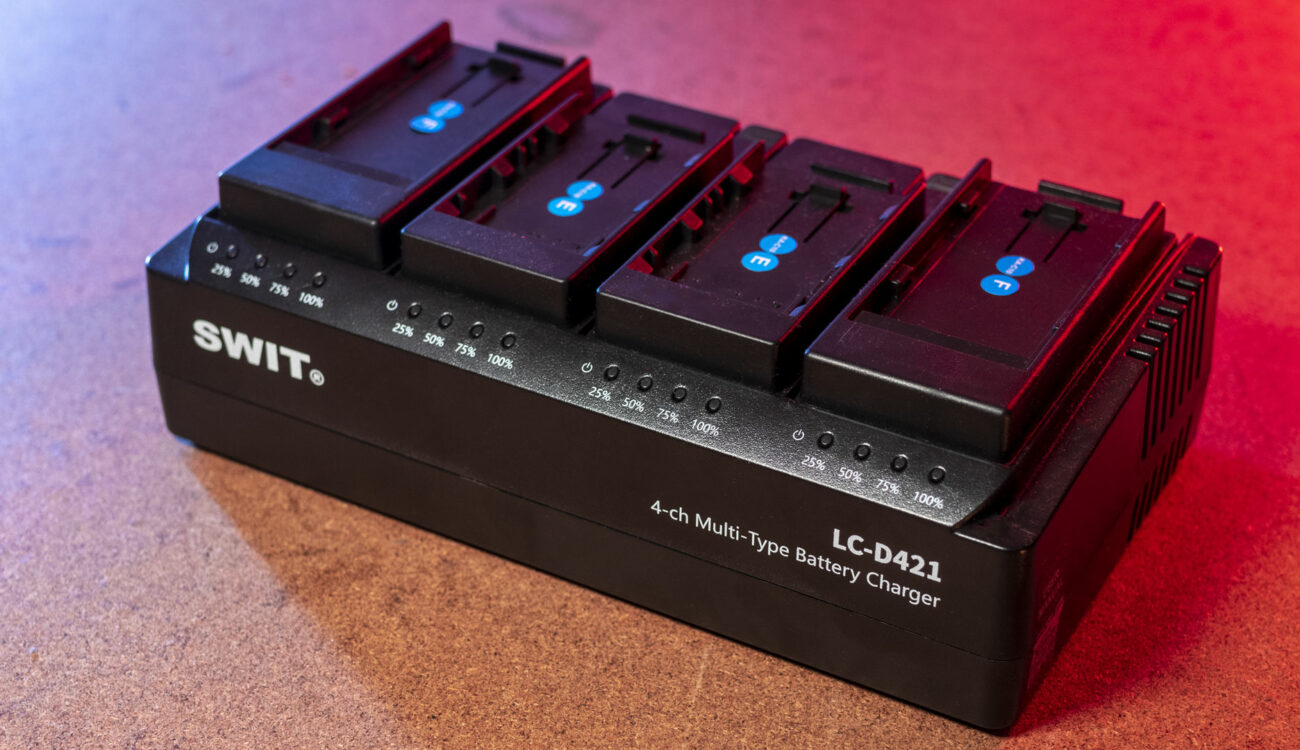
The SWIT LC-D421 is a versatile four-channel battery charger. This unit consists of the main charger body with exchangeable plates, so you can customize it to suit your needs to simultaneously charge Sony NP-F, Canon LP-E6, Sony BP-U, Panasonic CGA, JVC50 batteries, and so on. After a couple of months of use, let’s take a closer look at the SWIT LC-D421 to see if it can become your next all-in-one battery charger.
Disclaimer: As usual, let me first say that I am not a SWIT Ambassador. Like every other article on CineD, SWIT, or any other brand, did not pay me to write this article. However, the company sent me the product to review for free. This review is my unbiased opinion, as SWIT did not modify, influence, or gave input about the article before its publication.
SWIT LC-D421 features
The SWIT LC-D421 is a four-channel battery charger. This unit can charge four DV batteries at the same time. The main purpose of this type of product is to simplify the lives of filmmakers by eliminating the need to carry multiple chargers on the road or at home.
I recently talked about the Fxlion PL-SP40 quad-channel battery charger that can charge Sony NP-F and Panasonic D54/VBD batteries. While both products can simultaneously charge four batteries, the SWIT LC-D421 has removable battery plates, whereas everything is built-in on the Fxlion PL-SP40.
Short Films 101
In short, the SWIT LC-D421 is a box with four connectors on top of the unit. When you purchase it, you’ll have to choose which battery plates you want. I received mine with two Sony NP-F style plates and two Canon-LP-E6 ones. Other plates models are also available; below is the full list of compatible batteries:
- KA-C10U: Sony BP-U type (8.4V/2A)
- KA-C10F: Sony NP-F type (8.4V/2A)
- KA-C10D: Panasonic CGA, AG-VBR59 (8.4V/2A)
- KA-C10B : Panasonic VW-VBG6 (8.4V/2A)
- KA-C10C: Canon BP-945 type (8.4V/2A)
- KA-C10I: SSL-JVC50 type (8.4V/2A)
- KA-C10V : JVC BN-VF823 type (8.4V/2A)
- KA-C10E: Canon LP-E6 (8.4V/1A)
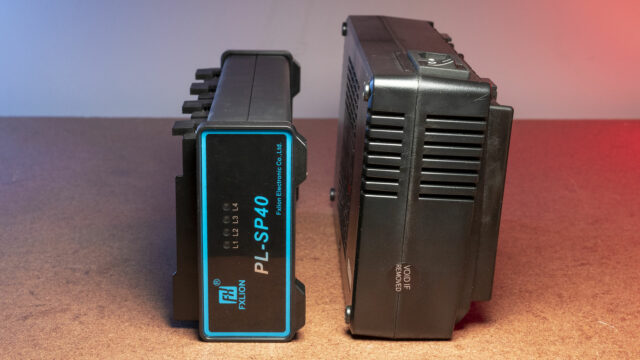
Build quality and dimensions
The main charger is a 220mm x 125mm x 69.3mm plastic box. The plastic does not feel cheap, I wouldn’t drop it, but it feels like it can take some abuse.
The SWIT LC-D421 weighs about 700g, which is almost the same as the Fxlion PL-SP40, although the latter is slightly smaller.
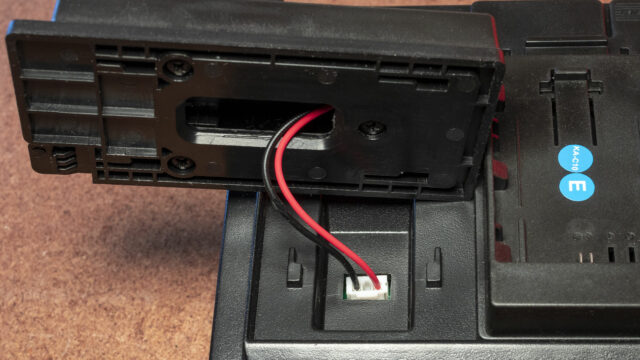
Once you plug the battery plates into each power connector, the plates slide into the charger and lock into place.
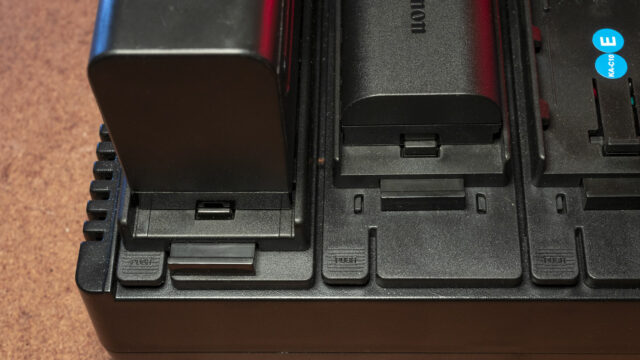
To remove a plate, you have to press a little plastic tab and slide it back to disengage it. Take care not to break the plate’s connector inside that looks a bit fragile.
When you put a battery into a battery plate, the fitting is tight but not hard. Usually, on a cheap battery charger, the plates’ tolerances are off, but this SWIT charger got it perfectly right: when the battery is in place, it is not too tight or loose. To remove the battery, you’ll have to press another tab and slide the battery off.
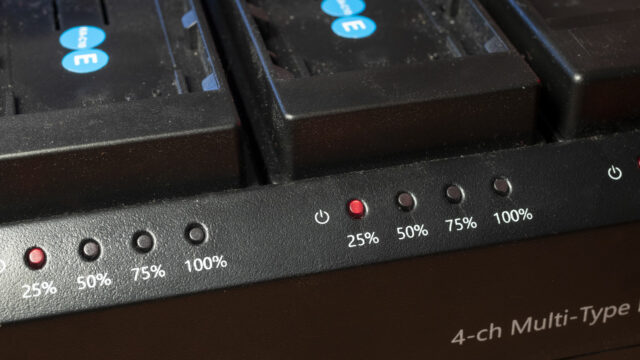
Below each battery plate, there are four LED charging indicators: 25/50/75/100%. I found that the unit was quite accurate at displaying charging percentages and actual battery state. This charging indicator system is also far more accurate and manageable than the Fxlion one’s that turns from red when charging to green when the battery is fully charged.
Charging output
The SWIT LC-D421 plugs into mains power, and you can’t power it via a V-Mount/Gold Mount battery. There’s an On/Off switch at the back of the unit, next to the AC plug.
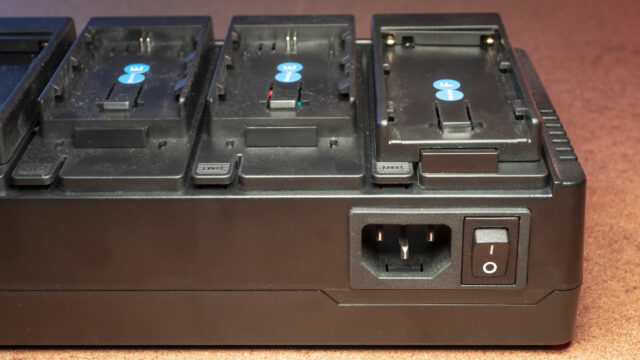
According to the company, the charger power consumption is 100W, and the charging output is DC 8.4V with a maximum of 2A per channel, except for Canon LP-E6 batteries that can only charge at 1A per channel. As a direct comparison, the Fxlion PL-SP40 only outputs 1A per channel, so the SWIT should be twice as fast, but more on that later.
Fan noise
It’s worth mentioning that, as soon as you turn the SWIT LC-D421, a built-in fan immediately kicks in, even if no batteries are inserted. There’s no way to turn this fan off. This fan is one of the main drawbacks of this charger as it is relatively loud. I had no way to measure how loud it is, but I would not sleep next to it. If you take it on the road or at home, you better carry it in another room.
During all my testings, the charger never got really hot to the touch. One strange thing is that the Fxlion unit does not have any fans. I contacted the company to learn more about it, and here is what they told me:
For the fan, our product requires that when the ambient temperature reaches >40℃, it can still be used normally. The lifetime of internal components will not be affected by the high temperature.
As it can charge 4-channels at 2A simultaneously, even if it may not feel hot when used at room temperature, but when the ambient temperature reaches 40°C, the internal temperature will still exceed the ideal operating temperature of the components, so we added a fan.
The Fxlion PL-SP40 charger only supports 4-ch 1A charging, and we don’t know how they treated temperature-related reliability standard
SWIT
I honestly prefer to have a fan inside a product rather than not and seeing it stop working in a couple of months. However, for rental houses or production companies/filmmakers with a dedicated gear room, this fan noise shouldn’t be an issue.
Charging times
Before we dive deeper into my various testings, let’s start by saying that charging times are very relative. Indeed, it depends on room temperature, the battery’s residual charge, battery age, and so on. All my tests will give you a global idea, but results may be differrent depending on your batteries.
To be a little more scientific, the theoretical charging time can be determined by dividing the battery capacity by the charging output value. For example, a Canon LP-E6N battery has a 1865mAh capacity, and the SWIT LC-D421 has a 1000mAh per channel charging output, so it should take the charger around two hours to charge this battery. For a Sony NP-F970 battery with a capacity of 6600mAh, the charging time should be around 3 hours and 30min.
I did my tests with official Canon LP-E6N batteries bought at the same time four months ago, with a meager charge/discharge cycle count under 20. I also used aftermarket (Patona brand) Sony NP-F970 style batteries around one year old, with a charge/discharge cycle count under 50.
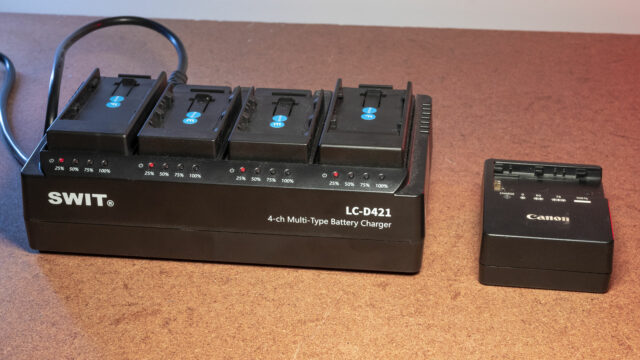
SWIT LC-D421 real-life tests
First of all, I decided to compare charging times between the SWIT LC-D421 and an official Canon LC-E6 battery charger. The Canon LC-E6 has an output of 8.4V/1.2A, whereas the SWIT can output 8.4V/1A. It means that the SWIT unit should be a little slower than the Canon one.
For my test, I put only one Canon LP-E6N inside the SWIT LC-D421. With no big surprise, the Canon LC-E6 charger completed the task in 1 hour and 45min, and the SWIT took 2 hours and 10 minutes, which is around 20% slower. I did the test twice and found similar results.
Also, I did a similar test charging two Canon LP-E6N batteries on the SWIT LC-D421, and charging times were close, around two hours. I reached out to SWIT about these findings, and here is their answer:
SWIT always takes the highest value for safety, reliability and sustainability. Since Canon’s E-type battery has a relatively small capacity, 2A charging will exceed the normal charging range of the battery cell, resulting in a serious decline in battery life. Therefore, the original Canon charger can only charge 1.2A; And LC-D421 is specially designed for E-type batteries with current limiting processing, only 1A charging is supported, so the charging time will be a little bit longer than the original charger. Other types of batteries can be charged at 2A by LC-D421.
SWIT
I did another charging test to spice things up, this time using Sony NP-F970 batteries, between the SWIT LC-D421 and the Fxlion PL-SP40. I put two batteries in each charger. The SWIT charger took 3 hours and 18 minutes, while the Fxlion did it in around 5 hours.
Final thoughts
As you can see, the results from these charging tests are not bad. However, the SWIT charger takes a little extra time to fully charge batteries compared to an OEM charger. Is it a deal-breaker? I don’t think so.
To me, the SWIT LC–D421 is one of the most versatile and universal battery chargers on the market right now. It covers most of the batteries filmmakers use on a daily basis – especially Canon LP-E6, Sony NP-F, and Canon BP – and will definitely speed up your workflow. Is it perfect? No, the biggest drawback to me is the fan noise, which some filmmakers that don’t have a separate room to charge their equipment might find annoying.
Price and Availability
The SWIT LC-D421 is available now for $305.00/€205.00 with four battery plates.
I did not find any other 4-channel battery charger with removable battery plates in terms of direct concurrence. The Fxlion PL-SP40 retails for $225.00, but it has fixed Sony NP-F/Panasonic style battery plates. Other 4-channel battery chargers from Dolgin Engineering are also available, with prices starting at $345 – $398 for the TC40 chargers and $645 – $775 for the TC400 ones.
Link: SWIT website
What do you think about this four-channel battery charger? What type of batteries do you charge the most? Do you use third-party battery chargers? Don’t hesitate to let us know in the comments down below!



